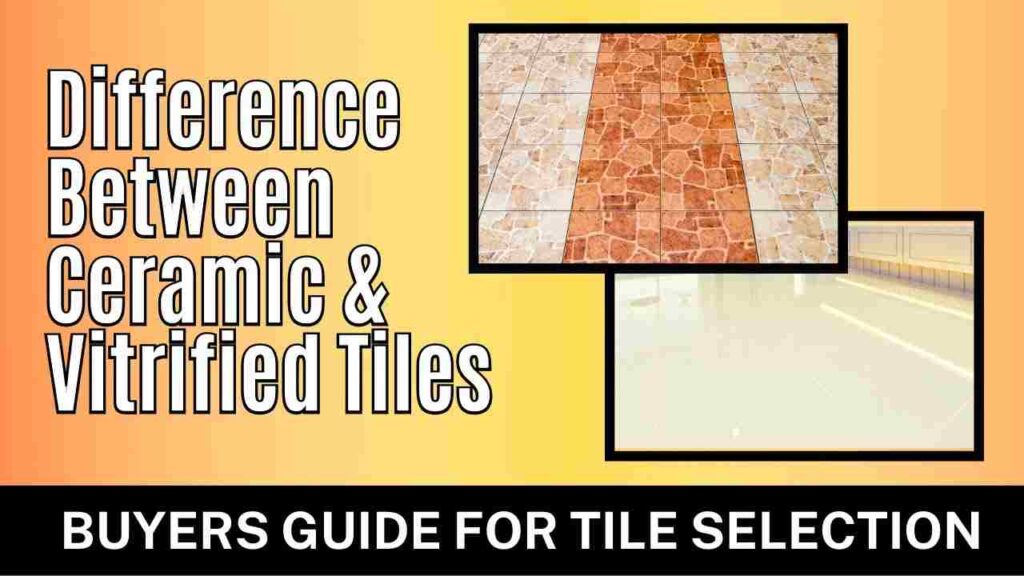
Explore 12 Key Difference between Ceramic and Vitrified tiles
Welcome to the fascinating world of flooring materials! In this article, we will delve into the intriguing 12 difference between ceramic and vitrified tiles. Join us as we explore their unique properties and unravel the secrets behind their popularity in the world of interior design.
12 Difference between Ceramic and Vitrified tiles
Ceramic and vitrified tiles are both popular flooring and wall covering options. While they may appear to be similar at first glance, there are significant differences between them. In this article, we’ll look at 12 key difference between ceramic and vitrified tiles, shedding light on their distinct characteristics and assisting you in making an informed decision for your next tiling project.
Raw Materials: While vitrified tiles are primarily made of clay, silica, feldspar, and quartz, ceramic tiles are primarily made of clay, minerals, and water. The crystalline appearance of vitrified tiles is due to the presence of quartz.
Porosity: Ceramic tiles are porous and can soak up liquids, which makes them vulnerable to stains. The low porosity and near complete lack of absorbency of vitrified tiles, on the other hand, make them significantly more stain and water resistant.
Strength: Vitrified tiles are significantly more durable than ceramic ones in terms of strength. They become extremely strong and less prone to breaking or chipping thanks to the vitrification process.
Water Resistance: Compared to ceramic tiles, vitrified tiles offer better water resistance due to their low porosity. They are a great option for moist environments like bathrooms and kitchens.
Finishing: The surface of ceramic tiles is typically covered in a glaze or finish, giving them a glossy appearance. In contrast, depending on the manufacturing process, vitrified tiles can have a variety of finishes, including glossy, matte, or rustic.
Maintenance: Because ceramic tiles are porous, they need to be cleaned and maintained on a regular basis. However, because they are stain and dirt resistant, vitrified tiles are simpler to clean and maintain.
Durability: Compared to ceramic tiles, vitrified tiles last longer. They are perfect for high-traffic areas because they can withstand heavy foot traffic and are less likely to deteriorate.
Cost: Ceramic tiles are typically less expensive than vitrified tiles. However, given their resilience and longevity, vitrified tiles provide better long-term financial value.
Installation: Both ceramic and vitrified tiles need to be installed by a professional. However, cutting and installing vitrified tiles can be more difficult due to their greater strength and density.
Chemical Resistance: Vitrified tiles are extremely resistant to chemicals, including acids and alkalis. They are suitable for places where chemical spills are likely, like laboratories or industrial settings, because of this quality.
Color Retention: Ceramic tiles’ colour may fade or become discoloured over time, especially if they are exposed to direct sunlight. On the other hand, vitrified tiles are less likely to fade and have better colour retention.
Size and Design Options: Compared to ceramic tiles, vitrified tiles are available in larger sizes, allowing for seamless installations and fewer grout lines. Additionally, there are numerous design options for vitrified tiles, including patterns and textures, giving you more freedom to achieve the look you want.
In order to choose the best option for your unique needs, it is essential to comprehend the difference between ceramic and vitrified tiles. To make a choice that fits your preferences and style, take into account aspects like durability, water resistance, budget, and maintenance needs.
Also Read: 12 Key Difference between Aerobic and Anaerobic Respiration class 10